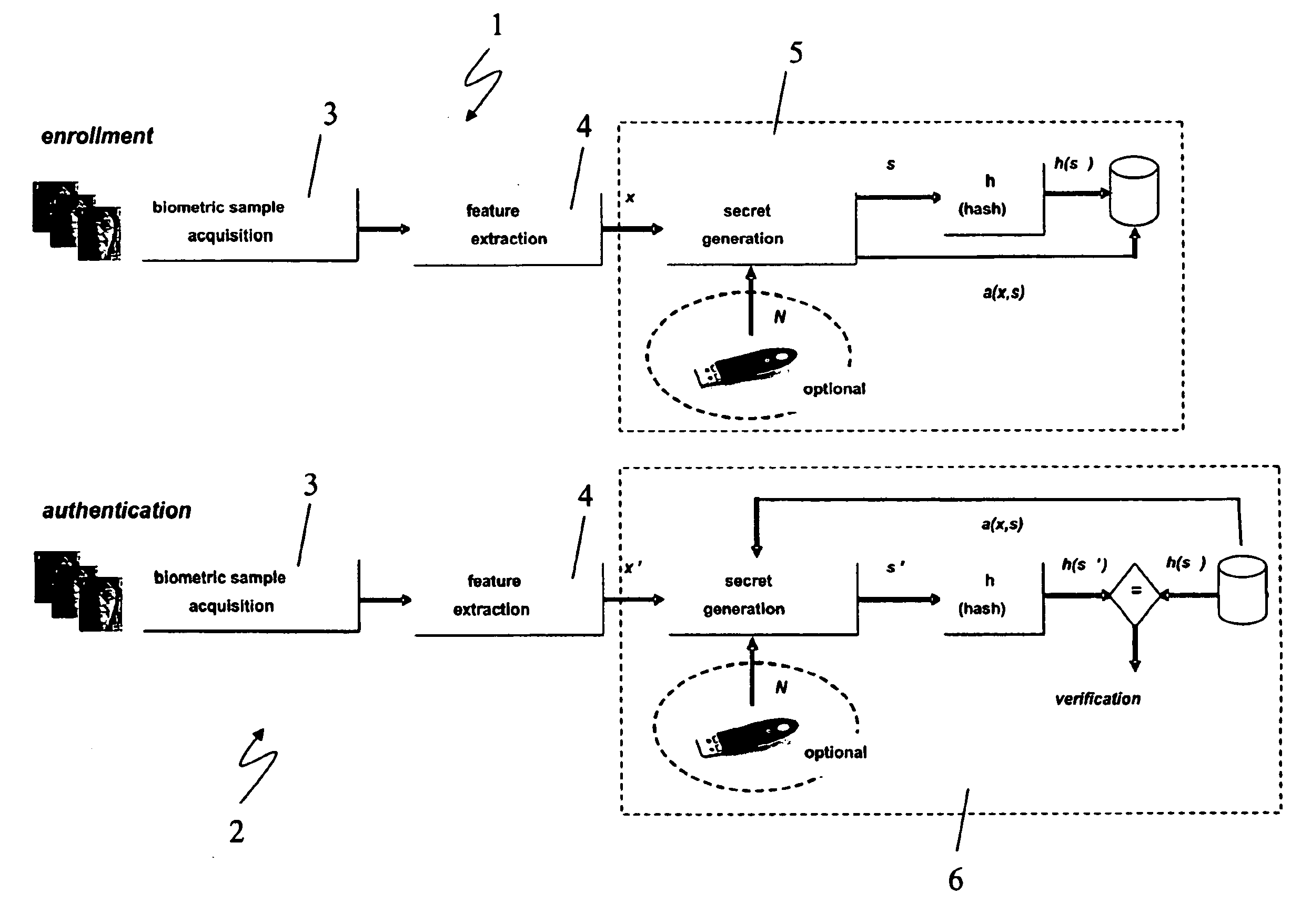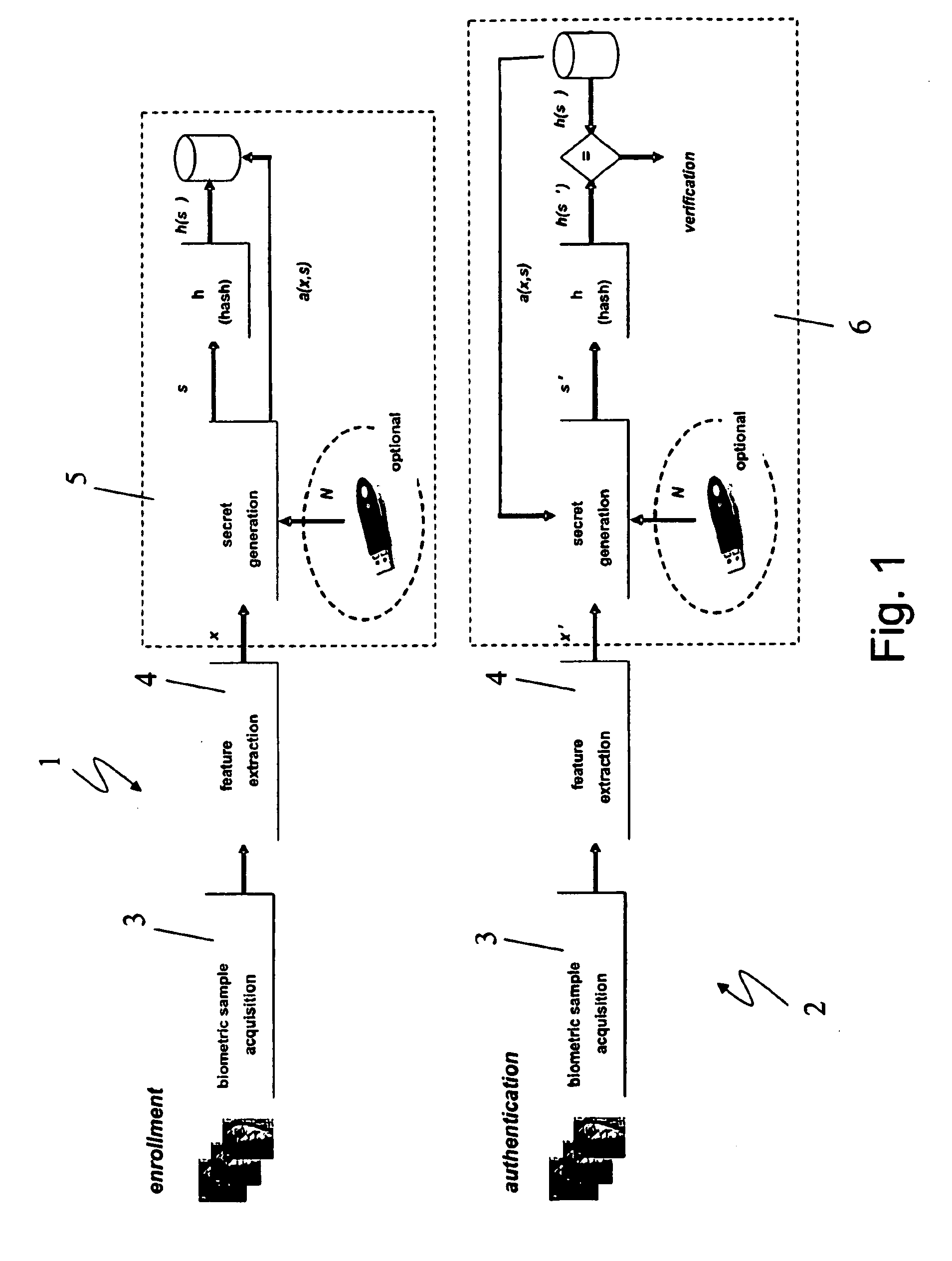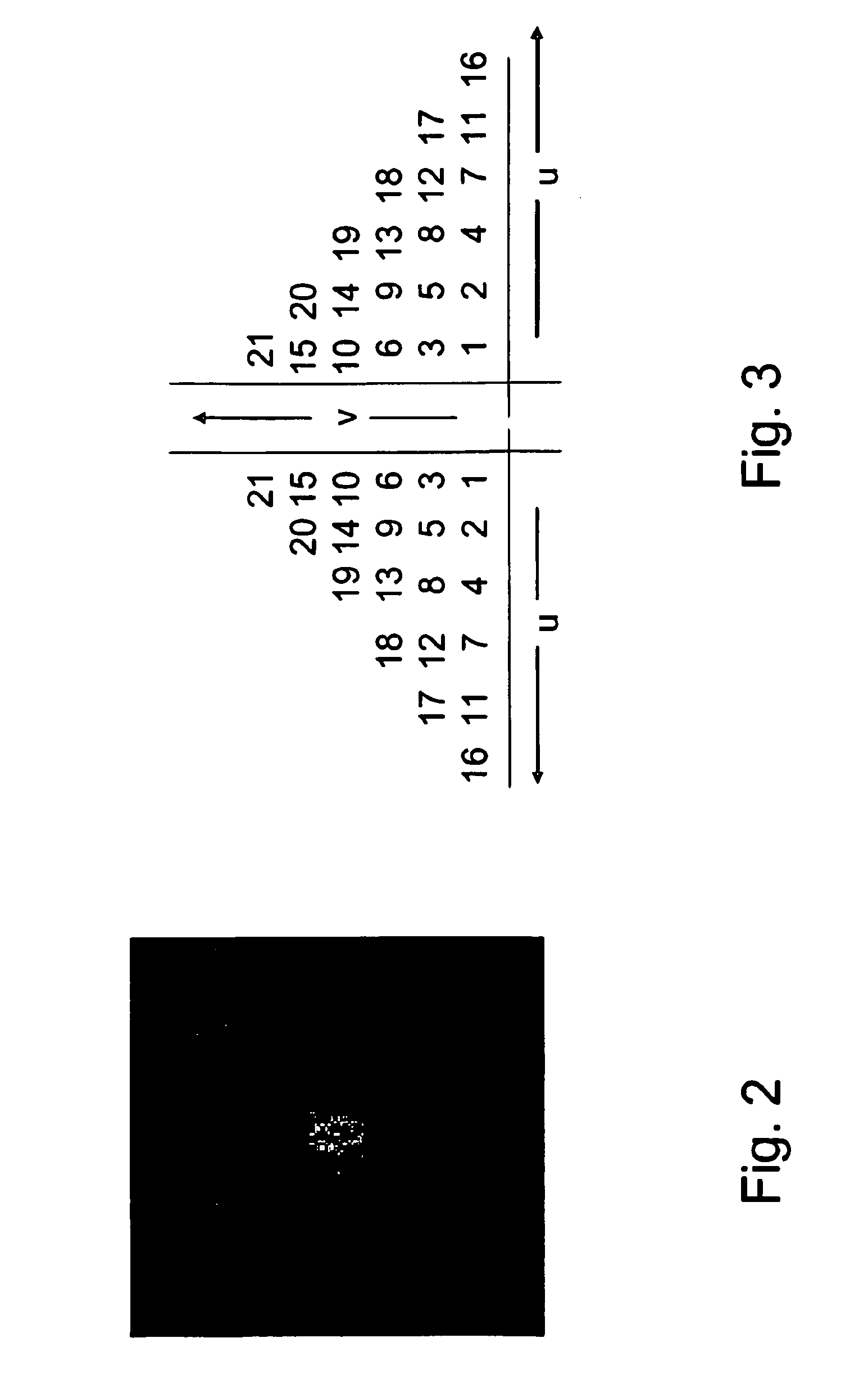Method and system for biometric authentication and encryption
a biometric authentication and encryption key technology, applied in the field of biometric user authentication and to biometric encryption key generation, can solve the problems of unclear security of reference biometric template protection, inconvenient security argument, and inability to secure solutions
- Summary
- Abstract
- Description
- Claims
- Application Information
AI Technical Summary
Benefits of technology
Problems solved by technology
Method used
Image
Examples
Embodiment Construction
[0037]The following discussion is presented to enable a person skilled in the art to make and use the invention. Various modifications to the embodiments will be readily apparent to those skilled in the art, and the generic principles herein may be applied to other embodiments and applications without departing from the scope of the present invention. Thus, the present invention is not intended to be limited to the embodiments shown, but is to be accorded the widest scope consistent with the principles and features disclosed herein and defined in the attached claims.
[0038]Moreover, for the sake of simplicity, a biometric encryption system according to the present invention, which will now be described with reference to biometric data coming from face images, can be logically divided into two sub-systems: an enrollment sub-system configured to implement an enrollment procedure, and an authentication sub-system configured to implement an authentication procedure. The enrollment and au...
PUM
 Login to View More
Login to View More Abstract
Description
Claims
Application Information
 Login to View More
Login to View More - R&D
- Intellectual Property
- Life Sciences
- Materials
- Tech Scout
- Unparalleled Data Quality
- Higher Quality Content
- 60% Fewer Hallucinations
Browse by: Latest US Patents, China's latest patents, Technical Efficacy Thesaurus, Application Domain, Technology Topic, Popular Technical Reports.
© 2025 PatSnap. All rights reserved.Legal|Privacy policy|Modern Slavery Act Transparency Statement|Sitemap|About US| Contact US: help@patsnap.com



